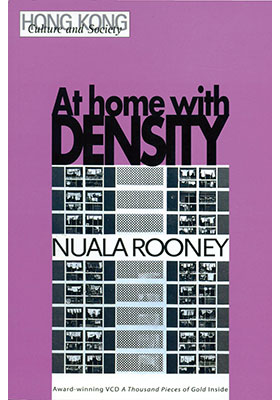At Home with Density
(香港高密度居家空間)
ISBN : 978-962-209-602-8
Hong Kong Culture and Society
May 2003
264 pages, 6″ x 9″, 93 b&w illus.
Ebooks
Also Available on
Hong Kong has one of the lowest crime rates in the world and is one of the most prosperous societies, but much of the population lives in low quality, high-density housing. Through qualitative interviews with long-term residents of public housing, this book explores residents’ experience of high-density space. It traces the development of Hong Kong housing forms and analyses how people’s expectations of domestic space have been affected by social mobility and shifting cultural values of space, lifestyle, and design. The accompanying award-winning documentary film, A Thousand Pieces of Gold, will enable readers to experience these spaces and listen to revealing interviews with the tenants.
“Although government constructed Housing Estates can be seen everywhere in Hong Kong, they are effectively private citadels, the interiors of which only their tenants have a chance to infiltrate. This study, focusing on individual tenants’ customized approaches to spatial use, is a revelation. Fascinating in terms of interior design, it also provides an insight into social mores and some of the fundamental influences on Hong Kong’s society and the psychology that drives its population, in the sense that space and habitat directly influence the way we act in our daily lives as individuals and as groups. Proving that good ‘design’ is the result of common sense, careful thinking and a natural response to conditions of life, Nualla Rooney’s book is an eye-opener for designers, architects, sociologists and psychologists alike.” —John Bowden, Vice-Chairman, Interior Design Association (Hong Kong), and Director, Hong Kong Design Centre
“It seems most of us who grew up in Hong Kong share a collective memory of compact living in our experience of home. Despite terms such as density and tight-space often being mentioned in the local and international architectural scenes, not many authors have dealt with these issues in a comprehensive and structured manner. Rooney’s approach to a subject, which is beyond the ordinary and beyond the visual, using very straight-forward and simple language, should be very much appreciated. The reading experience is familiar, ironic, sympathetic, surprising and entertaining at the same time.” —Gary Chang, award-winning architect



